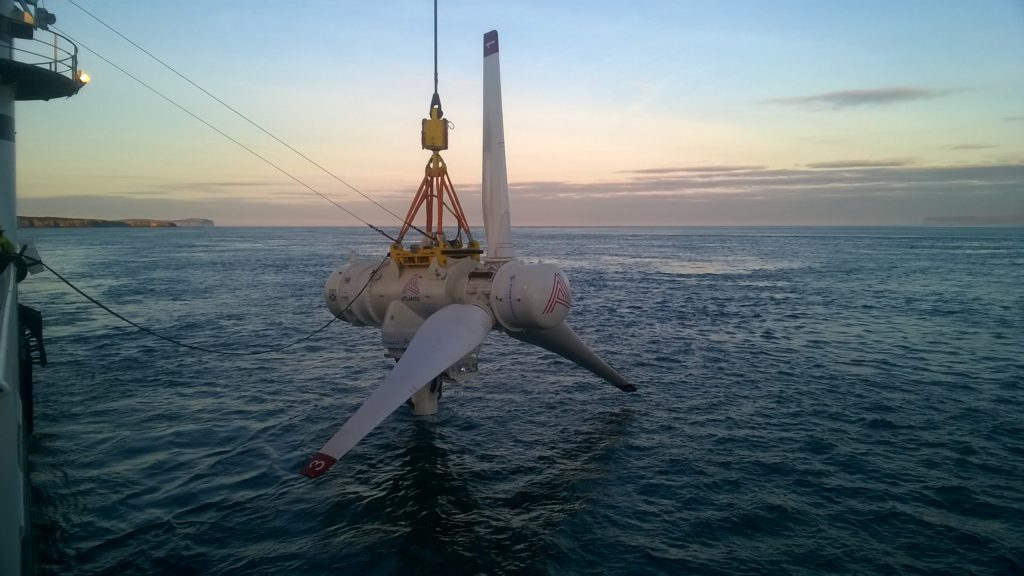
A new study finds that tidal stream power could reach 11.5 GW of installed capacity by 2050, but that time is of the essence if this resource is to be realised.
The study, published earlier this month by leading UK universities, says that investment in early-stage tidal capacity now could enable it to meet 11% of the UK’s electricity demand by 2050.
124 megawatts (MW) of prospective tidal stream capacity is currently eligible to bid for subsidy support in the upcoming Contracts for Difference (CfD) Allocation Round 4 (AR4). This includes the 80-MW MeyGen 1C, 30-MW Perpetuus Tidal Energy Centre and 14-MW Morlais projects.
Ensuring this 124 MW of capacity is installed by 2031 would put tidal stream on a trajectory to reach an estimated 11.5 GW – enough to generate 34 TWh/year by 2050, the study says.
Development and learnings from this initial 124 MW would also help lower the levelised cost of energy (LCoE) – an average of the net cost of generating electricity from a particular asset type – from its current level of around £240 per megawatt-hour (MWh) to below £150/MWh.
This would make tidal stream cost-competitive with technologies such as combined cycle gas turbines, biomass and anaerobic digestion, the researchers said.
The study, published in Royal Society Proceedings, was led by the University of Plymouth and was co-authored by a wide range of researchers including the University of Aberdeen, the University of Edinburgh, University of St Andrews, The Scottish Association for Marine Science, and the University of the Highlands and Islands.
The study also explores potential deployment by geography. The UK’s largest tidal resources lie in the Pentland Firth and waters around Orkney, and the Channel Islands, with around 6GW and 2GW respectively. However, maximising output here would require “major grid infrastructure” to carry electricity areas of higher demand.
However, it notes that other smaller sites could be more easily developed on the South Coast of England and in the Bristol Channel, given their proximity to existing grid infrastructure and demand centres.
It also finds “no evidence” that tidal stream turbines have caused any significant detrimental environmental impacts in their use so far, though notes ongoing monitoring is required.
Addressing the upcoming CfD auction, the authors also point out that the majority of technologies against which tidal stream projects are competing have a “significantly lower administrative strike price”.
“This makes it unlikely that tidal stream will be able to secure subsidy support, unless a ring-fence is provided to give subsidy access that is uncontested by other technologies, similar to the one being provided for floating offshore wind,” the study notes.
The same message was delivered by developers of wave and tidal projects during a COP26 side event last week, with proponents calling on the government to provide similar targeted support for the sector to ensure its ability to contribute to net zero.
Chairing a panel session on marine energy, Scottish Renewables chief executive Clare Mack said: “We essentially want the same opportunity that other technologies have had, which is to demonstrate their ability to reduce costs and their ability to integrate themselves within a broader energy mix.”
Commenting on the Royal Society research, Dr Danny Coles, a research fellow at the University of Plymouth and the study’s lead author, said: “It took the UK offshore wind industry approximately 20 years to reach 11.5 GW of installed capacity. If tidal stream power is going to contribute to the net zero transition, time is of the essence.”
Recommended for you
